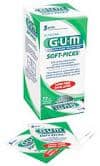by Marc Ackerman, DMD, MBA
What you say before the first bracket is placed can help determine the success of treatment

One of the most important things on which to counsel the patient and/or parent is teeth cleaning before bonding day. Let the patient and parent know prior to bonding day that the teeth will be polished at the beginning of the bonding procedure.
Forgoing Fluoride
It is important to make it clear that if the patient would like a comprehensive cleaning by their generalist or pediatric dentist, they must forgo any fluoride treatment at least 1 week prior to bonding. Should the patient have a fluoride treatment applied in the days immediately leading up to the bond, the tooth surface will have a fluoride layer that will inhibit the chemomechanical bond of the brackets to the teeth.
How Much Hardware?
You should select the appropriate amount of hardware to put on based on the patient’s age, maturity, and ability to tolerate. For example, on a preadolescent it may be wise to put on only upper braces and ease the younger, apprehensive patient into treatment. This is called a staged appliance placement versus a complete appliance placement.
The initial wire selection is also important. Although one wants to use the most effective and efficient wire to initiate tooth movement, you must consider the patient attached to the teeth. I often used a light round twist wire (.0175-gauge Respond) to “tickle” the teeth, knowing that it wouldn’t induce much tooth movement. If treatment is initiated with wires that induce much discomfort, the patient’s will to persist in treatment can easily be lost.
To read more articles by and about Ackerman, in our online archives.
If your practice allows patients to choose their own alastic ligatures, the patient should be informed about which colors “last,” or in other words, which have a tendency to discolor. You wouldn’t want a patient to select white ligatures and then eat a hot dog with mustard and have “yellow” ligatures for the next 6 weeks.
Words of Wisdom
Any instructions about oral hygiene, foods to be avoided, appointment intervals, and after-hours care (notice that it is not termed “emergency care”) should be discussed at the beginning of the bonding appointment. Patients and parents tend not to listen well after the appliances are placed. There is such excitement on the day of bonding that they will often look in the chairside mirror at the new hardware and any instructions go through one ear and out the other.
Marc Ackerman, DMD, MBA, is the chair and program director of the Jacksonville University School of Orthodontics. He can be reached at










